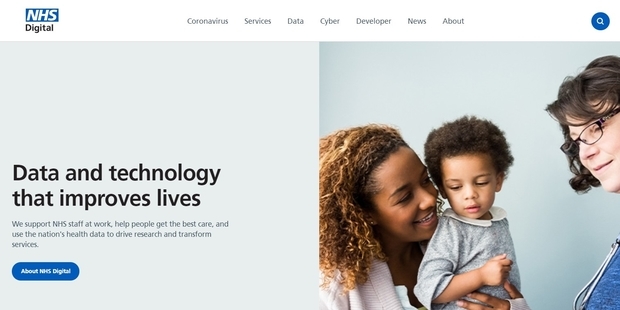Six employee wellbeing programmes to follow
Read on to learn more about the wellness initiatives these six companies introduced and how they measured success.
1. Jack Wills
![jack wills wellbeing programme]()
Jack Wills is a British fashion brand that designs preppy clothing for university students. They employ over 1,800 people and have stores in 320 locations.
To attract more staff that want a long-term retail career, Jack Wills have a complete benefits package that addresses every element of employee wellbeing. Their package aims to support the physical, mental, and financial health of their people.
Because the fashion world is constantly evolving, their employee benefits programme is flexible and in alignment with their younger staff demographic. Their people are a social bunch and having hundreds of discounts on their phones means they can save money on the go, and earn credit points while shopping on the high street with friends.
To nurture their teams’ mental wellbeing, Jack Wills also provides access to an EAP. Mental health benefits like these are invaluable when people feel anxious about personal issues, such as their finances, or work-related stress.
How has it worked Jack Wills? Well, after adopting a new holistic wellbeing package, they saw a 35% increase in candidate interest and their staff saved over £35,000.
2. The Gym Group
![gym group wellbeing programme]()
The Gym Group is a low-cost fitness business and has 95 gyms across the UK. Most employees work on the gym floor, so they are very aware of their physical health. Because of this, it’s important that their benefits promote a healthy lifestyle.
To motivate employees and keep turnover low, the Gym Group offers discounts on healthy recipe boxes, gym apparel, and supplements. Other health benefits include physiotherapists and online GPs, which are especially useful for personal trainers who need swift advice and treatment.
On days off, their employees enjoy discounted meals out and weekly treats, such as free coffees and snacks.
The Gym Group also offers employees an EAP, which they can use in complete confidence.
3. Purplebricks
![purplebricks wellbeing programme]()
Purplebricks is a UK tech-led estate agent that streamlines the experience of buying a property with a modern digital platform. As they have no high street branches, they can effortlessly scale up and grow their business. But scaling up brings its own unique set of challenges, especially when it comes to recruitment and retention.
Because Purplebricks is an agile company, they have a versatile employee experience programme, with plenty of benefits that cater to every aspect of employee wellbeing and health. Purple Bricks see themselves as digital innovators, so it’s important this filters through to all aspects of the business. From an employee benefits perspective, this means making sure their teams can access the programme whenever and wherever they want from a mobile app.
Whether it’s buying discounted shopping vouchers or booking an online therapy appointment, they can do everything quickly and easily from their phone. Being able to access hundreds of benefits on-demand not only makes people’s lives easier, but also increases the overall use and adoption of the wellbeing programme. A good user experience isn’t just about customers, but also your own employees.
In just six months since switching programmes, Purplebricks employees redeemed over 2,000 perks and saved over £20,000.
4. Wasabi
![wasabi wellbeing programme]()
Wasabi is a popular high street food vendor that specialises in Japanese sushi and bento. With over 1,700 members of staff, they have multiple sites throughout the UK. Hospitality businesses often experience high turnover, but focusing on employee wellbeing can increase staff retention.
To reduce turnover and attract more talent, Wasabi have a flexible programme that adds value to their employees' lives. Their range of benefits includes hundreds of discounts on big brands, which incentivises their teams to use the platform and increases employee engagement.
Their employees can save money on holidays, hotels, and even trips to the cinema. Company culture is also improving after introducing a recognition scheme that rewards individual achievements.
Within 12 months of launching their new wellbeing programme, Wasabi achieved a 13% decrease in turnover.
5. Google
![google wellbeing program]()
Google is the most popular search engine in the world, and because of this, their employees receive a very generous wellbeing package. It’s best to think of what Google offers as an inspiration for your own employee wellbeing package, rather than one to completely copy.
While many organisations offer staff discounts on lunches, all of the meals, snacks and drinks in Google canteens are free to employees and visitors. Google also regularly put on free cooking classes to bring teams together and strengthen working relationships. An excellent alternative for your employees could be something like a team-building day out or an office sports day.
Some Google offices also have gyms and massage therapists onsite, which people can use during their breaks. While not all businesses are in a position to offer this, another way of enhancing your team’s physical wellbeing is to provide online access to physiotherapists and discounted gym memberships.
Other Google benefits include free financial advice and therapy sessions. Introducing an EAP is a similar service, and a great way to invest in your employees’ financial and mental health.
6. National Health Service (NHS)
![nhs wellbeing program]()
The NHS offers a compressive employee wellbeing package that supports mental, physical and financial wellbeing.
Like most companies, their staff have access to transport discount schemes, such as Cycle to Work and season ticket loans. However, the NHS discount scheme goes further, saving staff money on home and car insurance, as well as MOTs.
What the NHS does particularly well is recognising that their employees want flexible working. Depending on the person’s role, employees can choose what hours they work and when. People can also buy holiday days, topping up their annual leave when they are running low, and saving some tax and National Insurance in the process.
Similar to an EAP, the NHS offers counselling and other therapies for people who are experiencing problems in their mental health or just need to talk to someone outside of their support network. Given the nature of the NHS’s work, you would expect this level of wellbeing support for their staff, but it’s something all organisations can work towards.











Share